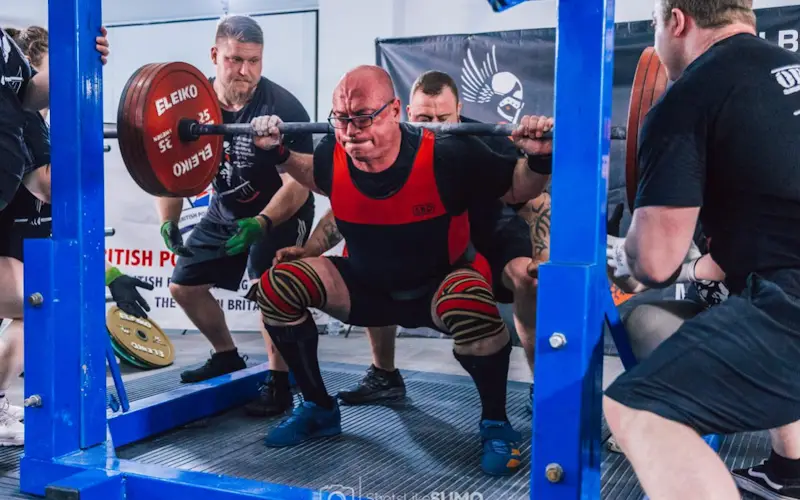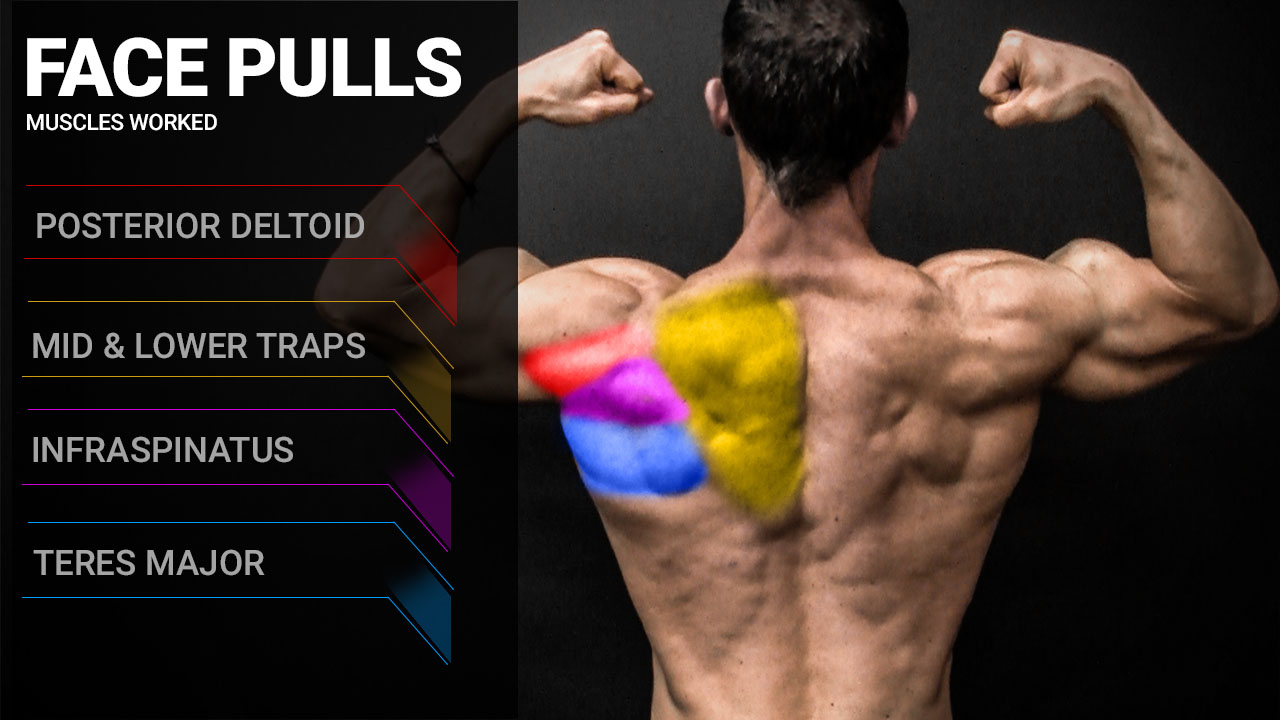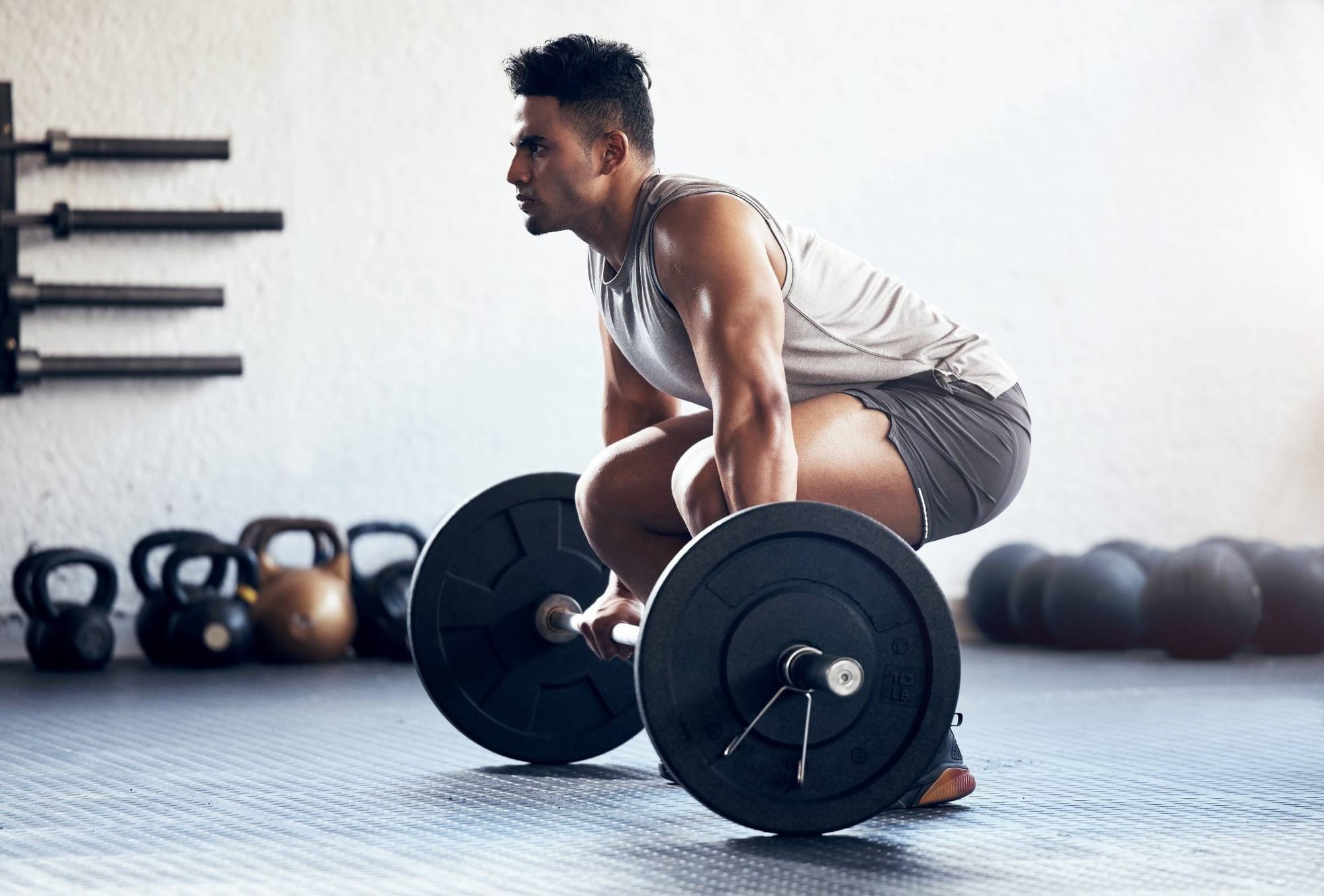
Common Powerlifting Injuries: Prevention and Management Strategies
Powerlifting is a demanding sport that pushes the human body to its limits. While the pursuit of strength is incredibly rewarding, it also comes with an inherent risk of injury. Understanding common powerlifting injuries, their causes, and effective prevention and management strategies is crucial for longevity and continued progress in the sport. This article will delve into some of the most frequent injuries faced by powerlifters and provide actionable advice to keep you lifting safely and effectively.

Understanding Injury Risk in Powerlifting
Research indicates that powerlifting has an injury rate comparable to or slightly less than some other non-contact sports, averaging around [1.0–4.4 injuries per 1,000 training hours.[40, 41, 42] However, the nature of these injuries can vary. Novice lifters may be more prone to acute injuries due to technical errors or overloading, while experienced lifters might face more chronic or overuse injuries from repetitive strain.[41] The most commonly affected areas are the shoulders, lower back, elbows, and knees.[40, 41]
Common Powerlifting Injuries and Their Causes
1. Shoulder Injuries (e.g., Impingement, Rotator Cuff Strains, Tendonitis)
Shoulder injuries are particularly prevalent, often linked to the bench press.[41]
-
Causes:
- Poor Technique: Excessive elbow flare during bench press, incorrect bar path, or lack of scapular retraction and depression can stress the shoulder joint.[43, 44, 45]
- Overtraining/Volume: Excessive pressing volume without adequate recovery.[41, 44]
- Muscle Imbalances: Weak rotator cuff muscles, scapular stabilizers, or an imbalance between pressing and pulling strength (anterior dominance).[41, 44]
- Poor Posture: Prolonged sitting and poor posture can lead to adaptations like tight pecs and weak upper back muscles, altering shoulder mechanics.[44]
- Inadequate Warm-up: Failing to prepare the shoulder joint and surrounding muscles for heavy loads.[46]
-
Prevention & Management:
- Technique Refinement: Focus on proper bench press form – keeping elbows tucked (not excessively flared), maintaining scapular retraction, and using appropriate leg drive.[43, 47, 45]
- Strengthen Rotator Cuff & Scapular Stabilizers: Incorporate exercises like face pulls, band pull-aparts, YTWLs, and external/internal rotations.[44]
- Balanced Programming: Ensure adequate pulling volume (rows, pull-ups) to balance pressing movements.[48, 44]
- Load Management: Avoid excessive and rapid increases in training load or volume.[49, 50] Track your training to monitor load progression.[49]
- Proper Warm-up: Include dynamic stretches and activation drills for the shoulder complex.[46, 41]
- Address Posture: Be mindful of posture outside the gym and incorporate corrective exercises if needed.[44]
- Recovery: Allow adequate rest and consider soft tissue work if necessary.[51, 49] NSAIDs can be used for short-term pain relief but consult a professional.[51]

2. Lower Back Injuries (e.g., Disc Herniation, Strains, Nerve Compression)
Lower back pain and injuries are common, often associated with squats and deadlifts.[41, 52]
-
Causes:
- Improper Form: Rounding the lower back (spinal flexion) during squats or deadlifts, excessive forward lean in squats, or incorrect hip positioning.[53, 54, 55, 56, 57, 41, 52]
- Core Weakness/Instability: Inability to adequately brace the core and maintain a neutral spine under load.[54, 41, 58]
- Overtraining/Poor Load Management: Lifting too heavy too soon or excessive volume on spinal loading exercises.[41, 50]
- Mobility Restrictions: Limited hip or ankle mobility can force compensations in the lower back.[53, 54]
-
Prevention & Management:
- Master Technique: Prioritize learning and maintaining a neutral spine during squats and deadlifts. Focus on proper bracing (Valsalva maneuver).[59, 53, 54, 60, 55, 56, 57, 61, 52, 62, 58]
- Strengthen Core: Include exercises that build core stability and anti-rotation strength (planks, side planks, bird-dogs, Pallof presses).[63, 41]
-
Use a Lifting Belt (Properly): A belt can help increase intra-abdominal pressure and support the spine during heavy lifts, but it's not a substitute for good form or a strong core.[64, 65, 66, 67, 68, 58] Learn when and how to use it effectively.
- Find high-quality SBD lifting belts at [Link to: sbdlife.net belts page]
- Improve Mobility: Work on hip and ankle mobility to allow for better squat and deadlift mechanics.[53, 54]
- Gradual Progression: Increase weight and volume systematically, avoiding sudden large jumps.[49, 50]
- Listen to Your Body: Don't push through significant pain. If pain persists, seek professional advice.[69, 50]
- Consider Exercises like Reverse Hypers: These can help strengthen the lower back and glutes without excessive spinal loading.[70, 71]

3. Knee Injuries (e.g., Patellar Tendinopathy, Meniscus Issues)
Knee pain is often associated with squats, particularly with high volume or improper technique.[41, 72]
-
Causes:
- Incorrect Squat Form: Knees caving inward (valgus collapse), excessive forward knee travel without proper hip engagement, or squatting too deep with poor mechanics.[53, 54, 41]
- Muscle Imbalances: Weak glutes, hamstrings, or VMO (vastus medialis oblique) relative to quadriceps.[41]
- Overtraining/Volume: Too much squatting volume without adequate recovery.[41, 50]
- Inadequate Warm-up: Not preparing the knee joint and surrounding tissues.[46]
-
Prevention & Management:
- Perfect Squat Technique: Focus on tracking knees in line with toes, engaging the glutes, and controlling the descent and ascent.[59, 53, 54]
- Strengthen Supporting Musculature: Include exercises for glutes (hip thrusts, glute bridges), hamstrings (Romanian deadlifts, leg curls), and quads (leg extensions, lunges).[41]
- Use Knee Sleeves: Knee sleeves can provide compression, warmth, and proprioceptive feedback, potentially improving comfort and stability during squats.[67, 73, 74, 75, 76, 77, 78, 79, 80, 81, 82, 83, 84, 85, 86] They are not a fix for bad technique but can be a helpful aid.[81, 84]
- Mobility Work: Ensure adequate ankle and hip mobility to prevent undue stress on the knees.[53]
- Load Management: Progress squat volume and intensity gradually.[49, 50]
- Eccentric Exercises for Tendinopathy: If patellar tendinopathy is an issue, eccentric exercises may be part of a rehab plan, though evidence for their efficacy alone is mixed. Other treatments like PRP or ESWT may be considered for persistent cases.[72, 87]

4. Elbow and Wrist Injuries (e.g., Tendonitis, Sprains)
These can occur from bench pressing, squatting (low bar position), or deadlifting (mixed grip).[41, 88, 89]
-
Causes:
- Improper Grip/Technique: Incorrect wrist position in bench press or squats, excessive elbow flare in bench press, or issues with mixed grip in deadlifts.[88, 45, 89]
- Overuse/Repetitive Strain: High volume of pressing or gripping movements.[41]
-
Prevention & Management:
- Correct Grip and Technique: Ensure neutral wrist position during presses and squats. Use wrist wraps for support if needed, especially on heavy sets.[90, 91, 92, 93, 94, 95, 1, 17, 96, 97, 89, 98, 99, 100, 101, 102, 103, 104, 105, 106]
- Balanced Training: Strengthen forearm and grip muscles.
- Mobility Work: Maintain good wrist and elbow mobility.
- Load Management: Gradually increase loads and volume.[49, 50]
General Injury Prevention Strategies for Powerlifters
Beyond specific injuries, these principles apply to overall injury prevention:
- Prioritize Proper Form: This is paramount. [Optimal technique means lifting the most weight possible while maximizing strength and muscular development and reducing injury risk.[88] It also means the movement is repeatable and consistent.[88] Consider working with a [qualified coach [46, 69]].
- Warm-Up Thoroughly: Include light cardio, dynamic stretching, and movement-specific activation drills before every session.[46, 69, 41]
- Cool Down: Gentle stretching or light activity can aid recovery.[46]
- Progressive Overload (Intelligently): Gradually increase weight, volume, or intensity. Avoid [excessive and rapid increases in training loads [49, 50]].
- Listen to Your Body: Don't push through sharp or persistent pain.[69, 50] Differentiate between muscle soreness and injury pain.
- Adequate Recovery: This includes sufficient sleep, proper nutrition, and rest days.[46, 69, 49, 50] Poor sleep (≤7 hours) is associated with increased injury risk.[49]
- Address Muscle Imbalances: Incorporate accessory exercises to strengthen weak links and ensure balanced development.[63, 41, 107]
- Stay Hydrated: Dehydration can impair performance and potentially increase injury risk by affecting tissue resilience.[49]
- Manage Stress: Psychosocial factors can influence injury risk and recovery.[50]
Injuries are a potential part of any intense athletic endeavor, but they are not inevitable in powerlifting. By understanding the common risks, prioritizing flawless technique, implementing smart training principles, and listening to your body, you can significantly reduce your chances of getting sidelined. A proactive approach to injury prevention and management will allow you to enjoy a long, strong, and successful powerlifting journey.
Have you experienced any of these injuries? What are your go-to prevention strategies? Share your thoughts in the comments! And for gear that supports safe and effective lifting, visit sbdlife.net.
References:
- BackCountry Physio.](https://backcountry.physio/common-powerlifting-injuries-and-how-to-prevent-them/)
- EliteFTS.](https://www.elitefts.com/education/what-causes-and-how-do-we-manage-injury-risk/)
- EliteFTS.](https://www.elitefts.com/education/rehab-recovery/shoulder-injury-prevention-causes-and-solutions/)
- Physio Network.](https://www.physio-network.com/blog/foundations-weight-training-injuries-lifters-go-wrong/)
- Progressive Rehab & Strength. 9 Essentials for Injury Prevention in Powerlifting [88]
- StrongerByScience.](https://www.strongerbyscience.com/how-to-prevent-muscle-strains/)
- PubMed Central. Low back and hip pain in powerlifting [52]
- PubMed Central.](https://www.ncbi.nlm.nih.gov/pmc/articles/PMC9403009/) (Note: Focuses on rehab, but relevant to back pain)
- PubMed Central.](https://www.ncbi.nlm.nih.gov/pmc/articles/PMC10893258/)
- PubMed Central. Injuries in weightlifting and powerlifting: a systematic review [40]
- PubMed Central.](https://www.ncbi.nlm.nih.gov/pmc/articles/PMC5825345/)
- Piedmont Healthcare.](https://www.piedmont.org/living-real-change/the-most-common-weightlifting-mistakes-people-make)
- WFIT.](https://wfit.com.au/powerlifting-training-mistakes-to-avoid-and-how-to-correct-them/)
- Physio Network.](https://www.physio-network.com/blog/strength-conditioning-physiotherapy/) (General injury rates)
- StrongerByScience.](https://strongerbyscience.com/how-to-squat/) (Mentions knee valgus)
- StrongLifts.](https://stronglifts.com/deadlift/#Common_Deadlift_Mistakes)
- StrongLifts.](https://stronglifts.com/squat/#Common_Squat_Mistakes)
- Barbell Logic.](https://barbell-logic.com/fixing-common-deadlift-mistakes/)
- Strength Ambassadors.](https://strengthambassadors.com/blog/squat-mistakes-to-avoid-and-how-to-fix-them/)
- MTNTOUGH.](https://mtntough.com/blogs/mtntough-blog/8-deadlift-mistakes)
- Starting Strongman.](https://startingstrongman.com/2017/09/19/strength-fundamentals-breathing-bracing/)
- SportiveTricks. Mastering the Valsalva Maneuver in Powerlifting [61]
- PubMed Central.](https://www.ncbi.nlm.nih.gov/pmc/articles/PMC2883611/) (Valsalva research)
- BarBend.](https://barbend.com/best-bench-press-accessory-exercises/) (Accessory exercises)
- EliteFTS.](https://www.elitefts.com/coaching-logs/top-5-assistanceaccessory-exercises-for-the-bench-press/)
- BarBend.](https://barbend.com/best-wrist-wraps/)
- Gymreapers.](https://www.gymreapers.com/blogs/news/do-wrist-wraps-help-you-lift-heavier)
- SBD Ireland.](https://sbdireland.com/blogs/news/do-knee-sleeves-help-you-lift-more)
- Barbell Medicine.](https://www.barbellmedicine.com/blog/what-do-knee-sleeves-do/)








